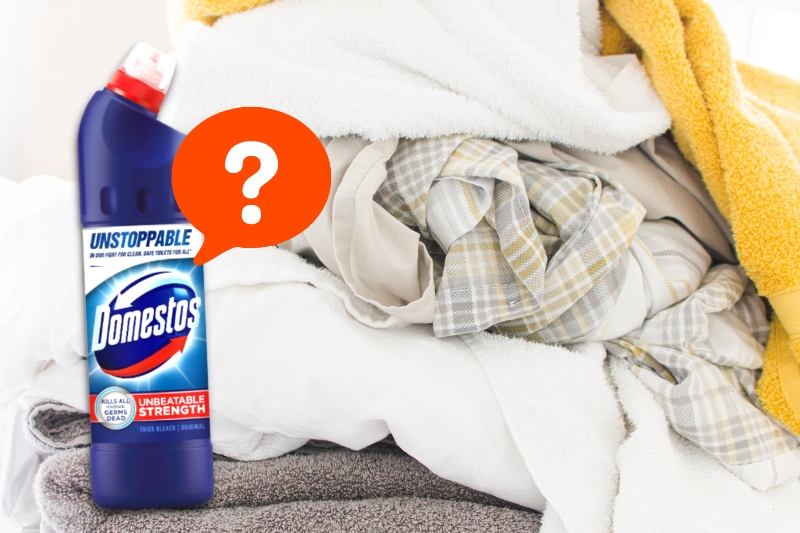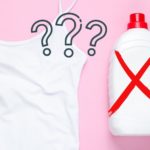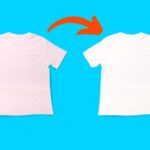Bleach. The darling of the punk set. The no-nonsense, scary-in-careless-hands, gets-the-job-done substance that gave the title both to an anime series and a feted debut album by Nirvana.
Why does it have such cultural resonation? Because it’s a household giant that’s been used for years to whiten clothes and banish germs with a thoroughgoing determination that inspires respect.
However, bleach is first and foremost a verb. To remove colour from something is to bleach it. This used to be done by leaving sheets in the sunlight, but along came chlorine in the eighteenth century and changed everything.
From then on, bleaching became synonymous with the powerful and highly toxic substance common in homes up and down the country today.
Such stuff is great for cleaning the toilet, but can you use it for lightening your clothes? That’s what we’re here to find out. Let’s throw some light on bleach.
What Is Household Bleach?
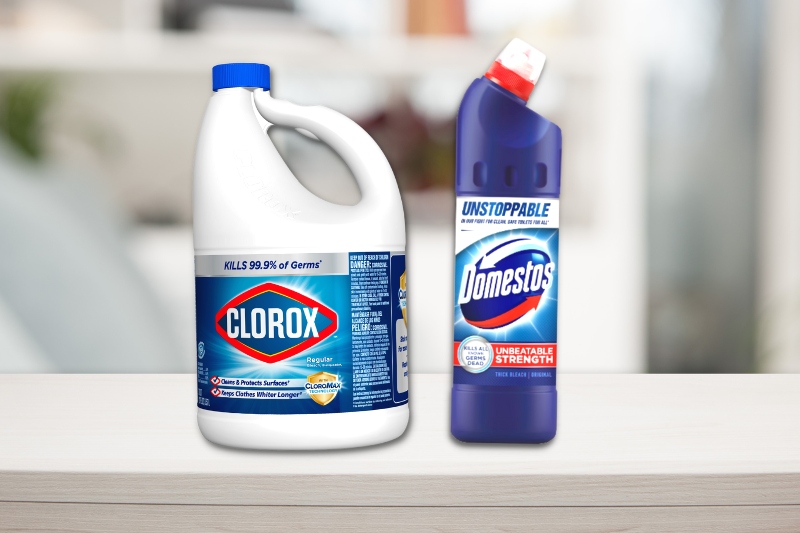
Standard household bleach is a highly effective cleaning and antibacterial solution. It is usually composed of a solution of 3-6% sodium hypochlorite diluted in water and combined with sodium hydroxide, hydrogen peroxide, and calcium hypochlorite.
When people refer to ‘household bleach’, they usually mean a sodium hypochlorite solution, for example Domestos Original. This type of bleach is also known as chlorine bleach as it made by reacting chlorine gas with sodium hydroxide (NaOH) solution.
Other types of bleach include oxygen bleach, also known as sodium percarbonate, which is a gentler and more eco-friendly alternative to regular bleach. It has a number of uses around the home in cleaning and laundry. Sulphur dioxide-based bleaches are also used sometimes to bleach clothes.
Household bleach, or chlorine bleach, should be treated with extreme caution.
Protective clothing and great care should be employed when handling it, and exposure to the skin should never occur (even bleach that’s safe for hair needs to be handled with protective gear).
How Does Chlorine Bleach Work?
Chlorine bleach goes to work by oxidising molecular bonds, which disintegrates them and stops the substance from being able to absorb light.
This means that the substance appears to disappear, if you follow. This means an end to stains, because they are no longer visible.
Additionally, bleach tackles bacteria, using the same bond-smashing oxidisation technique. Its first big hit was the sound thrashing it gave cholera, when added to the water supply (in extremely low concentration, obviously). It has had follow-up smashes with influenza, HIV and even that superest of superbugs, MRSA.
Can You Use Household Bleach on Clothes?
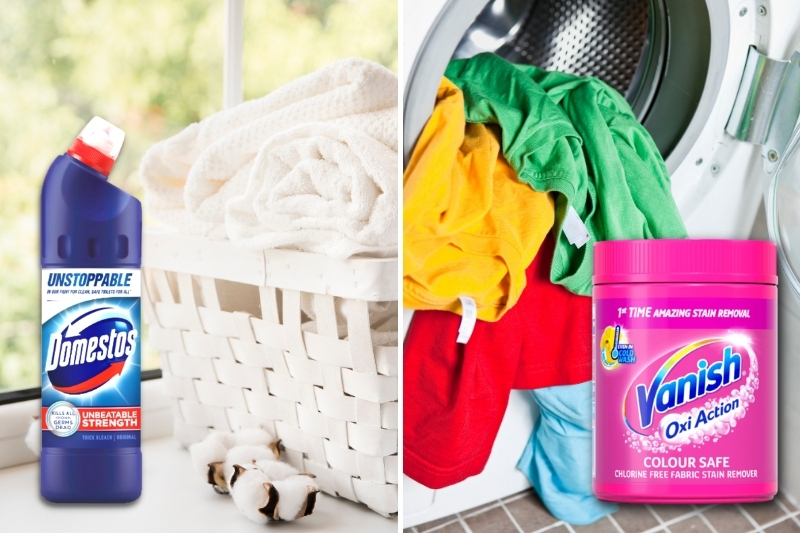
Household bleach, which usually means chlorine bleach or bleach containing sodium hypochlorite, can indeed be used on clothes. However, they must be white, unless you are deliberately trying to remove the colour from them.
Before using household bleach on your clothes, check these three things:
- Will using bleach on them damage them? You can get to the bottom of how your trousers and other garments will cope with bleach by checking their label. If there’s a triangle there, you’re good to go (but see below regarding testing). If the triangle has a cross over it, you’re not.
- If you just want to clean a coloured garment rather than whiten it, don’t use household bleach. Instead, you can buy a laundry oxygen bleach product like Vanish Oxi Action Stain Remover that gives colour-safe results. It’s better to go with something like that than Harpic on your best black trousers! Chlorine bleach should only ever be used on clothes that are already white, or clothes that have a colour you no longer wish them to have.
- Do you have protective gear? Before you go anywhere near that bottle of chlorine bleach, you should be getting gloved-up. The burns you can give yourself with bleach should be enough to make you consider wearing shoulder-high gloves and waders. And a welder’s mask.
How to Use Household Bleach on Clothes
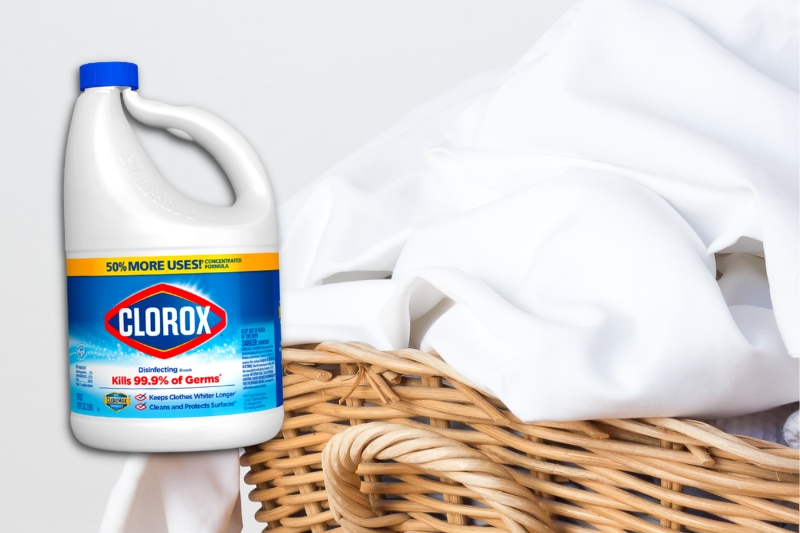
Freshening whites
One word: dilute. You have to remember how dangerous bleach can be. You can remove some of its teeth by carefully adding water. A good solution can be made with two tablespoons of bleach mixed with ¼ cup of water.
But don’t go blundering in there, just because you’ve seen the triangle on your clothing’s care label. You need to spot test first, so choose an unobtrusive part of your garment (inside hem’s a classic) and try a few drops on there.
Leave for one minute. If there’s no discolouration, then it looks like your blouse is not going to get shirty on you. If on the other hand the bleach leaves a mark that’s all too visible, don’t panic—there are things you can do to remove bleach stains from clothes.
So, assuming all’s well and it’s safe to proceed with the wash, put your clothes in the washer, add the diluted bleach (if your machine drawer doesn’t have a bleach dispenser, use the normal dispenser) and let the wash commence.
Little tip: hot water will work better than cold as it speeds up the chemical reaction.
When the wash has finished, you may find that there’s still an unmistakable bleachy smell to your clothes. Don’t despair, just give your washing another rinse or two until the odour goes away.
Banishing stains
If you’re looking to see off some serious stainage, it’s better to soak if you have the time. Fill a bucket with a gallon (about 4.5 litres) of warm water, mix in a ¼ cup of household bleach, and then put your grimy garments in there. Leave them submerged for eight hours.
Then simply remove from the bucket and run through a normal cycle in the washing machine. Again, an extra rinse might be a good idea if your nose recommends it.
Changing colours
Use the same technique as for stains, but be prepared in all honesty for some patchy results. It will probably look a little, how shall we put it? artisanal. If you’re lucky.
Other Ways to Whiten Clothes and Remove Stains
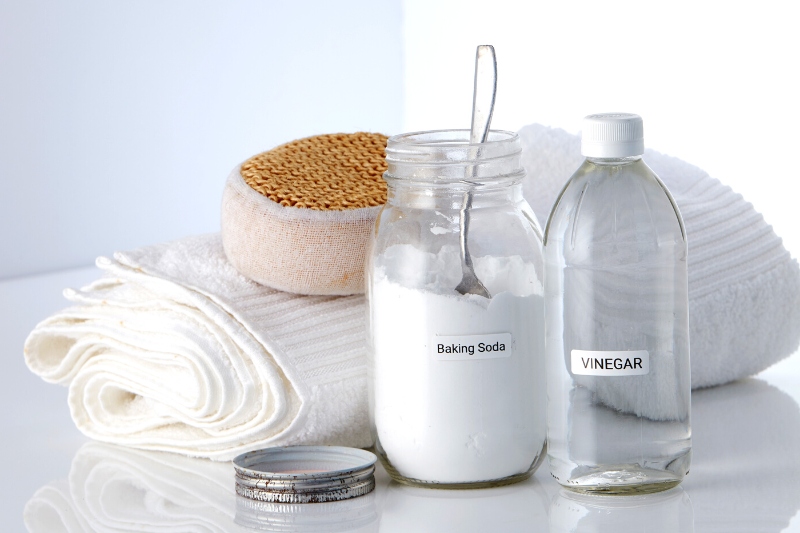
We should mention a few other super-effective ways to whiten whites and stump stains, for those times when bleach just isn’t in reach.
Vinegar
Get some distilled white vinegar on that stain. Ut’s cheap, mild and natural, and it really does the trick (it’s especially good with perspiration stains).
Add it to the rinse cycle and you’ll clean your washing and the machine at the same time! Warning: never mix vinegar with bleach. You have been warned.
Bicarbonate of soda (baking soda)
Couldn’t finish without mentioning our old friend bicarb. It’s a great stain and odour remover, and, when added to your laundry detergent, will leave your clothes with all the softness of advert-land.
Incidentally, you can safely mix bicarbonate of soda and bleach, should the urge take you. Just don’t forget those gloves.
Summing Up

Household bleach most certainly can be used on clothes, but only on whites that can boast the bleach triangle on their care labels (or on clothes you want to change and possibly ruin).
The golden rules are to dilute and to test. If you go ahead and don’t do either, you’ll end up with, at best, some silly looking clothes. At worst… well, we won’t go there. Did we mention that bleach is dangerous?
While household bleach is certainly a very effective means of keeping your whites white and stain-free, it’s always worth considering what other substances might do the job just as well, with no cost to your safety or to the planet. That’s got to be a better way for everyone.

Martin’s life revolves around films, dogs and food, but rarely all at the same time. At least two out of these three like to give clothes and furniture a hard time, and Martin enjoys discovering and writing about new ways to stop them doing their worst.
